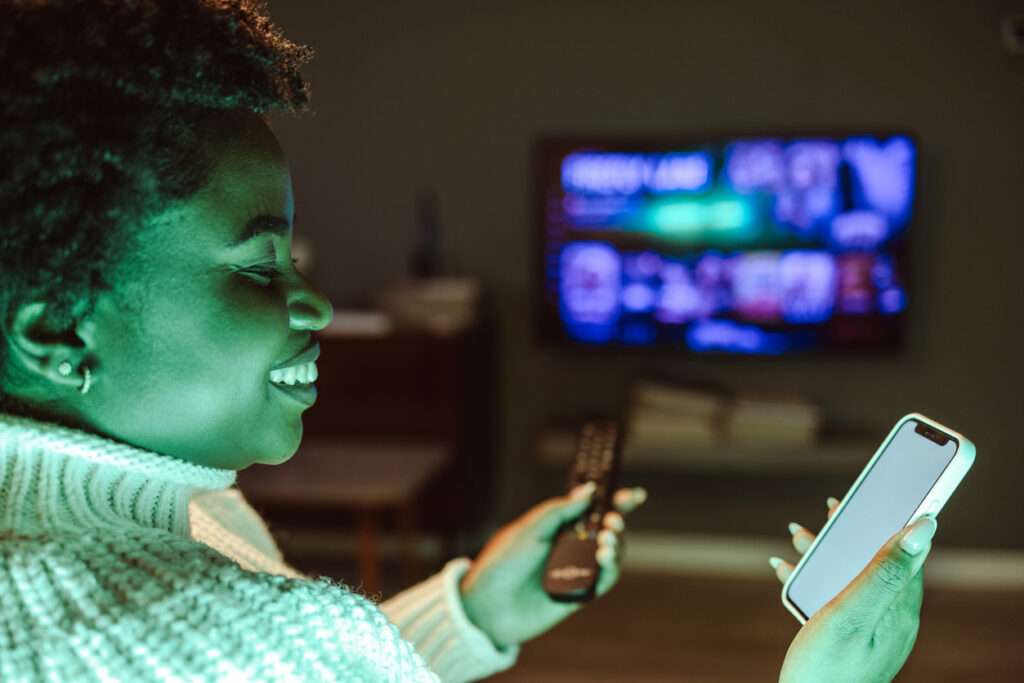Screens are a necessary part of life today, particularly for those who rely on their computers or other digital devices for work. But did you know that spending long hours on screens can have negative physical, mental and financial impacts? A new report by the American Optometric Association (AOA) revealed that more than 104 million Americans are exposed to prolonged screen time, including 70% of those working office jobs, that could be affecting their quality of life.
According to the report, the impact of unmanaged excessive screen time (spending seven plus hours on screens per day and not visiting an optometrist in the past year) on eye health was found to be wide-ranging. Of the 32 million Americans who had unmanaged excessive screen time, 55% experienced vision-related symptoms that may have been improved or resolved from regular visits to the optometrist. The report indicated that symptoms related to excessive screen time exposure could cost a person around $702 per year.
Prolonged screen time, especially if you use a computer screen for work, can do more than just affect your wallet:
- Health implications – As little as two hours of screen exposure per day can induce eye-related symptoms like myopia (nearsightedness) and digital eye strain, which can cause discomfort and impact your quality of life. Symptoms of digital eye strain include dry eyes, blurred vision, headaches, and back and neck pain.
- Lower productivity – Symptoms related to excessive screen time can lead to decreased productivity and less time to do the things you love if you have difficulty concentrating on screen-based tasks and have to put in longer hours to keep up.
- Missed work – Sometimes people have to miss work to recover from symptoms due to excessive screen time. In a four-week period, nearly 3 in 5 (57%) employed Americans with eye conditions miss full or partial days of work because of eye conditions or short-term symptoms, and nearly 1 in 10 (9%) miss more than a full work week.
- Poor sleep – Too much screen time can also keep you up at night. Using phones or tablets during the hour before bedtime can affect your ability to fall and stay asleep, and poor sleep quality can cause difficulty concentrating and impact your mental health.
How to ease the effects of prolonged screen time
You can’t always reduce your screen time, so it’s important to implement healthy habits to keep your eyes and overall body healthy.
Get a comprehensive eye exam: To make sure your eyes are as healthy as possible, it’s vital to see an optometrist for a comprehensive eye exam annually, even if you don’t use corrective lenses.
Optometrists are trained to provide comprehensive eye and vision care, and they can detect over 270 serious health conditions, including diabetes, high blood pressure, autoimmune diseases and cancers from an in-person eye exam.
“Seeing a doctor of optometry even just once per year can help prevent and reduce the effects and symptoms caused by excessive screen time, improving your quality of life,” said AOA President Dr. Ronald L. Benner. “There’s no substitute for an in-person visit to detect and treat potential problems promptly, and to help you learn better eye health practices at work and at home.”
Try these tips to avoid digital eye strain at home and at the office:
Blink often: Screen time decreases your blink rate, but blinking helps create and spread tears across your cornea, which keeps your eyes hydrated. If you have trouble remembering to blink frequently, try setting a reminder every few minutes. For a fun way to learn more about keeping your eyes healthy while on screens, download the mobile game Blink Land, available on IOS and Android devices.
Take breaks: Shifting your gaze away from your screen can also give your eyes a much-needed break. Also, practice the 20-20-20 rule: For every 20 minutes of computer viewing, gaze at something 20 feet away for 20 seconds to relax the eye muscles.
Check your positioning: Your computer screen should be 15-20 degrees below eye level (about 4 or 5 inches) as measured from the center of the screen, and 20-28 inches from your eyes.
To learn more about eye health and find an AOA doctor of optometry near you, visit AOA.org/EyeDeserveMore and learn more tips from AOA’s User Guide Study Companion.








